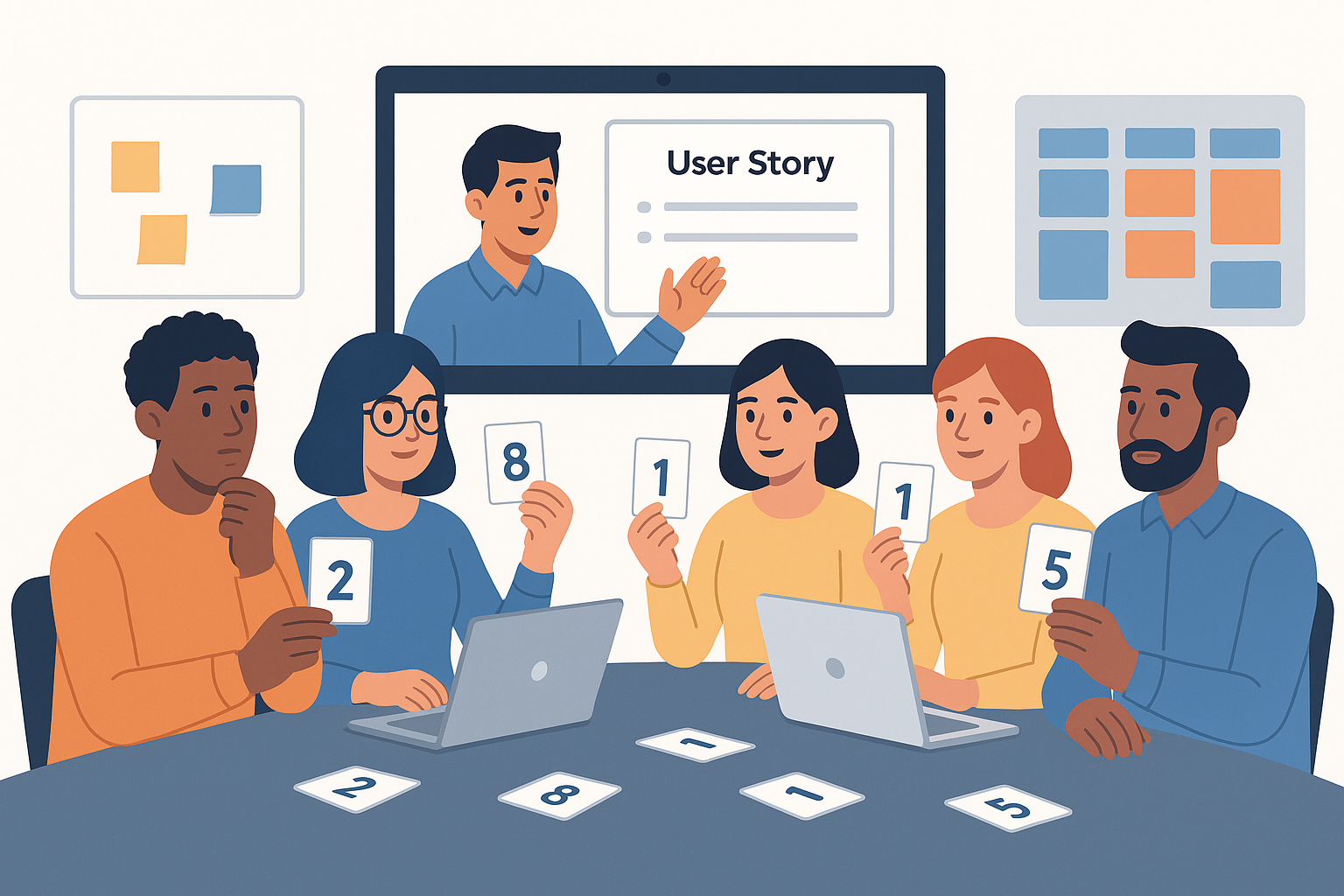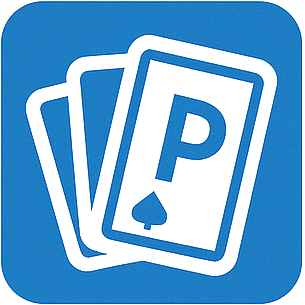
Let’s be honest: sprint planning can get messy.
You gather the team, open up the backlog, and suddenly you’re knee-deep in a debate about how “easy” a story is. One person says it’s a two, someone else thinks it’s a thirteen, and a third quietly wonders how they ended up in this meeting. Estimating work in software is hard, and that’s exactly why Planning Poker was invented.
Also called Scrum Poker, this estimation technique takes the stress and subjectivity out of sizing user stories. Instead of endless back-and-forths or arbitrary numbers, it brings structure, fairness, and even a little fun to your planning sessions.
Estimating Without the Chaos
So, how does Planning Poker actually work?
Picture this: the team is looking at a story. The Product Owner gives a quick overview, and once everyone understands the scope, each person chooses a card — usually based on the Fibonacci sequence (you know, 1, 2, 3, 5, 8, 13…). Everyone votes silently and simultaneously, then reveals their cards together.
Why all at once? Because it avoids bias. No one wants to be the person who said “2” when the senior dev said “13.” This way, everyone gets a say without influence.
When the cards are revealed, differences spark discussion. Maybe someone spotted a hidden dependency, or maybe someone else thought it was a simple fix. After a short chat, the team can vote again and usually lands on a consensus that feels fair and informed.
But… Why Fibonacci?
The Fibonacci sequence is more than a fancy pattern from math class. In Planning Poker, it reflects how uncertainty grows with task complexity. Choosing between 3 and 5 is manageable. Choosing between 7 and 8? Not so much. The gaps help highlight when a task starts to get murky, and that’s when good conversations happen.
The Magic Behind the Cards
What makes Planning Poker so effective isn’t the numbers — it’s the collaboration. Everyone at the table (or on the Zoom call) gets a voice. Junior devs, senior architects, QA testers, even designers — they all bring a unique lens to the estimate. The voting process levels the playing field and gives space for perspectives that might otherwise go unheard.
More importantly, it uncovers misalignment early. If one person says “quick fix” and another says “week-long nightmare,” you’ve just saved the team from walking into a trap. And it only took one round of cards to figure it out.
Why Teams Keep Coming Back to It
Teams love Planning Poker because it makes estimation feel like a game, but one with real outcomes. It’s engaging, fast, and repeatable. It works just as well for co-located teams as it does for remote ones. It makes your planning meetings shorter, sharper, and — dare we say — more fun.
And if you’re using the right tool (ahem, like ours), it only takes a few clicks to get started. No spreadsheets, no whiteboards, no complicated setup. Just your team, some cards, and a shared goal: figure out how much work this thing is going to take.
From Guesswork to Game Plan
Planning Poker is one of those simple ideas that just works. Whether you’re running Scrum by the book or just trying to make your sprint planning smoother, it helps you move from gut feelings to grounded estimates, without draining everyone’s energy.
So if your current estimation process feels like a mix of guesswork, groupthink, and good intentions… maybe it’s time to play a new hand.
Try our free Planning Poker app — no credit card, no download, just clarity.
Built for real teams, by people who’ve sat in those same long, painful planning meetings.
